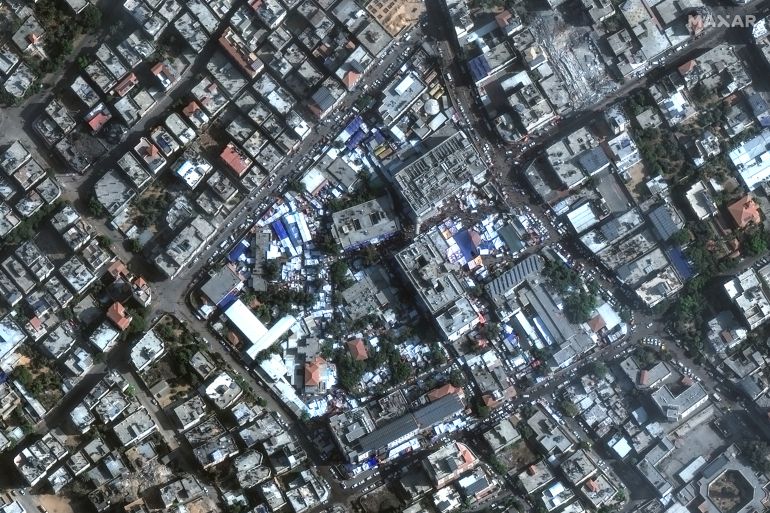In recent days, Israel’s military activities in Gaza have taken a concerning turn, with many accusing the country of waging a “war on hospitals.” Multiple reports indicate that Israel’s incursions into Gaza have specifically targeted medical facilities, raising questions about the humanitarian impact of these actions.
The largest hospital in Gaza, al-Shifa Hospital, has been a focal point of Israeli attacks. According to doctors inside the hospital, the Israeli army surrounded the facility for several days before raiding it on Wednesday. The Gaza health ministry reported that at least 40 people were killed at the hospital. Israel claims that Hamas, the Qassam Brigades in particular, have underground command centers or other facilities beneath Gaza’s hospitals. However, Hamas strongly denies these allegations.
The attacks on hospitals have sparked urgent pleas from Palestinian and international medical staff, as well as aid organizations, for a halt to the violence and the immediate delivery of essential medical supplies, water, and fuel to the affected hospitals. In conflicts, there is often a neutral body on the ground that acts as an intermediary between the warring parties, facilitating talks and arrangements for ceasefires, evacuations, and aid delivery. However, it appears that Israel has not sought the involvement of such organizations to confirm or deny the presence of military facilities in the hospitals under attack.
Commercial satellite images analyzed by experts shed light on Israel’s military operations in northern Gaza. The images reveal that Israel launched attacks in three columns, two of which consisted of 200-300 vehicles each. One column advanced from Israel along the coast, while the second crossed the Strip south of Gaza City before turning north along the coast. The third, smaller column moved in from the Erez checkpoint towards Beit Hanoon.
Despite the presence of these attack columns, satellite images show little movement in recent days. Most of the Israeli forces appear to have reached their current positions by last Friday and are now waiting for the next stage of the operation. They have dug in and encamped with armed vehicles positioned to deter Hamas incursions into the open areas in front of them.
Satellite images also reveal a large group of vehicles stationed inside Israel, close to the site of a previous Hamas attack. This group is believed to be the strategic reserve, ready to provide support if needed. Hamas fighters, on the other hand, have been adopting tactics appropriate to the urban environment, using tunnels, damaged buildings, and narrow streets to their advantage.
Hamas claims of destroying 160 Israeli military vehicles have been met with skepticism. While it is possible that Israeli vehicles have been hit, the term “destroyed” may not accurately reflect the extent of the damage. Militaries often use the term “incapacitated” to denote vehicles that cannot continue to be used as intended or easily repaired on the spot. The number of hulks visible in satellite imagery suggests that the number of truly destroyed vehicles is much lower than Hamas claims.
The situation in Gaza remains highly volatile, with concerns mounting over the targeting of hospitals and the humanitarian consequences of the ongoing conflict. International actors, including Qatar, are playing a role in hostage negotiations between Israel and Hamas, but there is a need for on-the-ground communication and coordination to alleviate the suffering of civilians and ensure the delivery of essential aid to medical facilities.




